It’s been almost six months since COVID-19 forced classes to go virtual. Professors nationwide wrapped up their courses in the spring and spent much of their summer preparing for an equally uncertain fall. Where would learning take place? What modality would their institution adopt?
Recently, we polled 808 higher education faculty members and instructional design staff in North America to more clearly understand their thoughts on the fall semester—and we’re highlighting our findings in a four-part series.
In this installment, we share what instructors think of their institutions’ plans and the support they have received in the lead up to the new academic year.
Top Hat’s free Faculty Preparedness Survey highlights instructional challenges and insights from faculty heading into the fall semester. Read or download the report here.
Faculty are largely uncertain about the fall term
No one could have predicted the way the spring semester would end. As such, it’s no wonder that over half of the faculty surveyed are unsure what the fall semester will hold. Confusion also characterizes instructors’ emotions heading into the new year. Here’s what faculty said when we asked them to describe how they felt about the upcoming academic year.
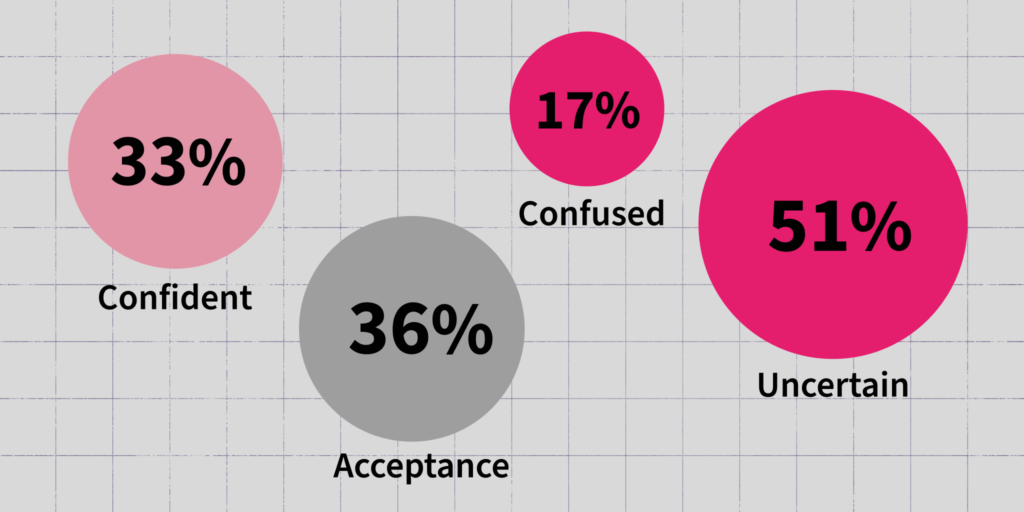
What grade did faculty give the plans from their institutions? The result was hardly a passing one. Almost half of respondents were dissatisfied by how their colleges or universities communicated what the fall would look like. Only about half were content with the stated plans for the new term.
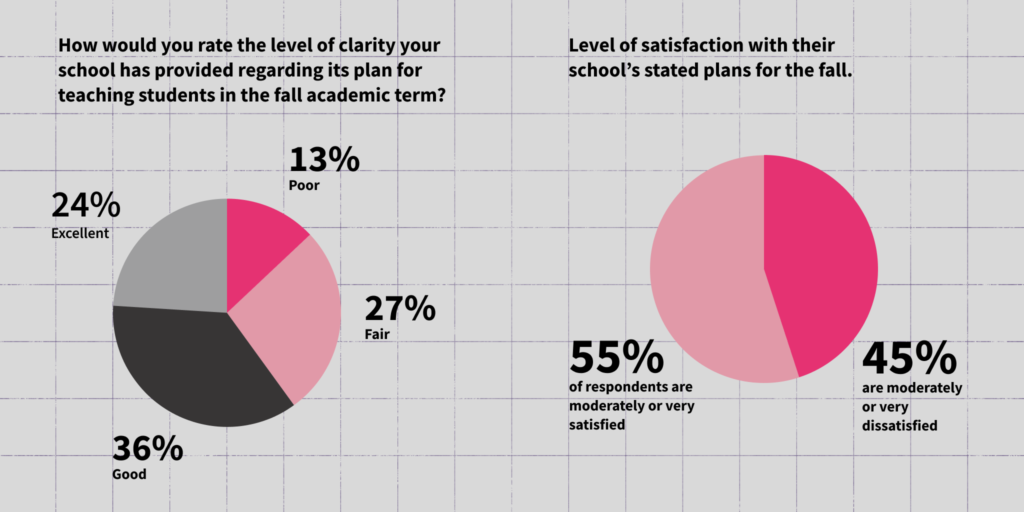
The personal and professional needs of instructors have not been met
Faculty had patience for the uncertain position institutions were in this past spring. But faculty aren’t confident with the personal and professional support their institutions provided over the summer. Personal issues like social distancing measures weren’t communicated clearly, while the lack of pedagogical support has impacted instructors’ professional success. Over one third of instructors viewed their institutions’ accommodation plans negatively, with poor and fair remarks making up a full 34 percent of responses.
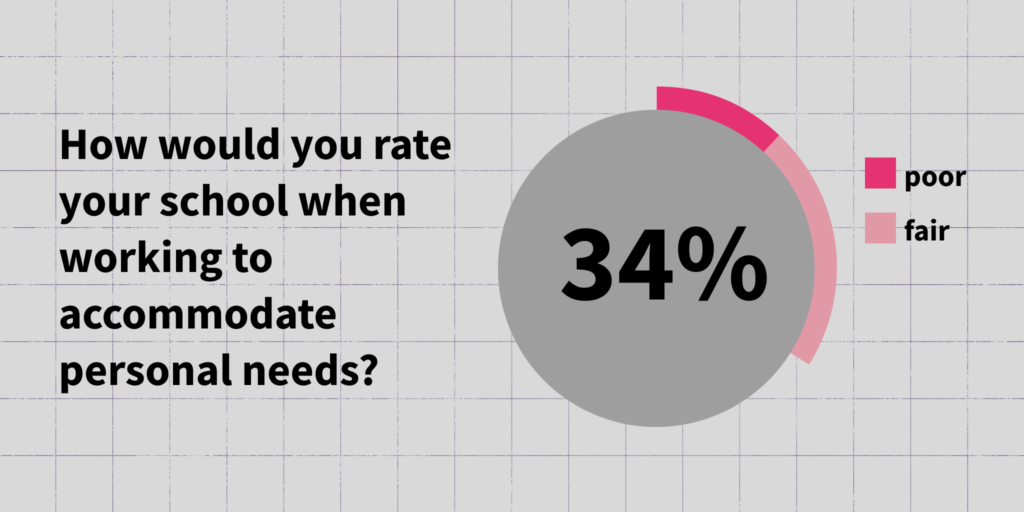
Faculty will need to keep health and safety top of mind as the fall semester commences. Just as important as their own wellbeing is the health and safety of students. Instructors’ remarks show dismay with how both issues have been approached at an institutional level. When we asked instructors to rate how well their school has planned for faculty and student health and safety concerns, 33 percent of responses were deemed as poor or fair across both questions.
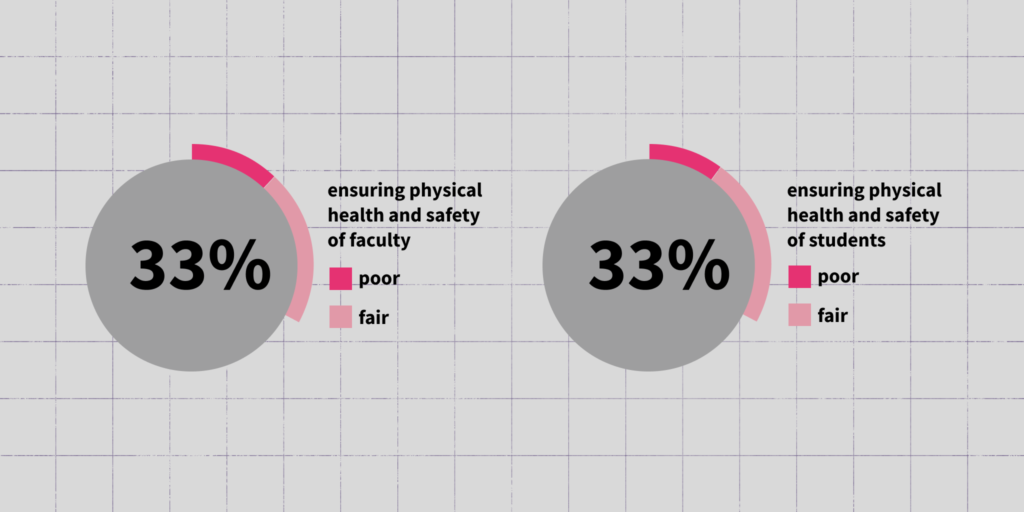
Institutional plans may impact student success
Among the biggest concerns for faculty is the issue of offering value to learners. Over half of respondents indicated a low level of confidence in the value of higher education for students.
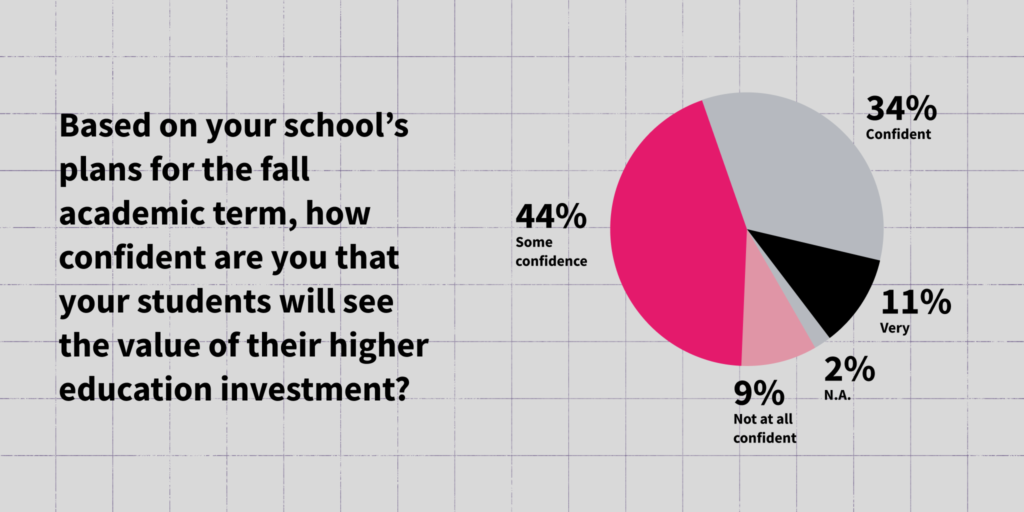
Almost half of respondents also indicated uncertainty as to whether students are set up for success in the stated course modality.
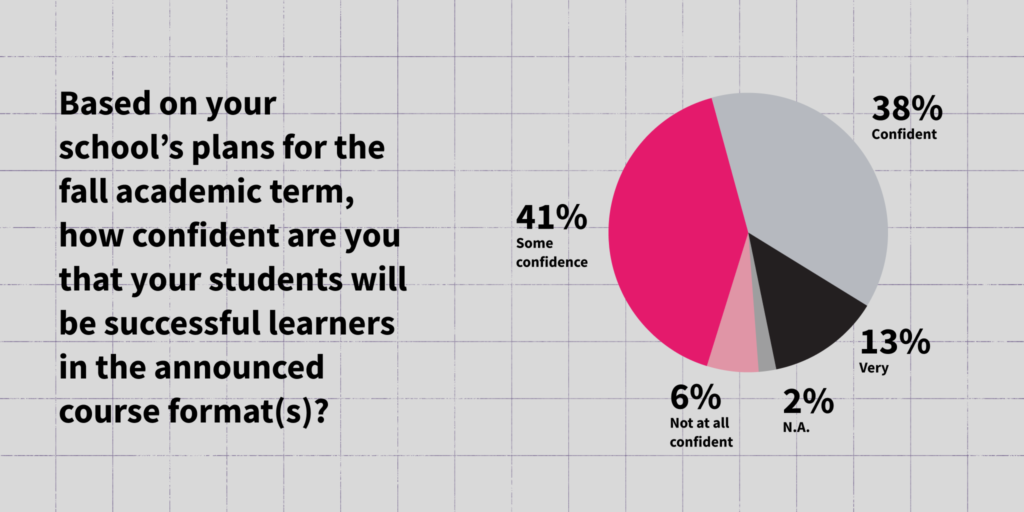
Online course delivery is still foreign for many faculty members. In order to empower students and themselves, higher ed instructors call for increased transparency, enhanced coordination with administrators and elevated support materials offered by their institutions.
Survey methodology
Survey responses were collected by Top Hat from 808 higher education faculty and instructional support staff in the United States and Canada from July 13 to 19, 2020.
How are other faculty members faring with tech tools? How are they managing student equity issues in their online classrooms? The answers to these questions, and additional insights, are provided in Top Hat’s free Faculty Preparedness Survey, which can be viewed or downloaded here.
Faculty sound off on the fall term in our four-part series
Part 2: Uneven Tech Adoption Raises Concerns About Student Success


